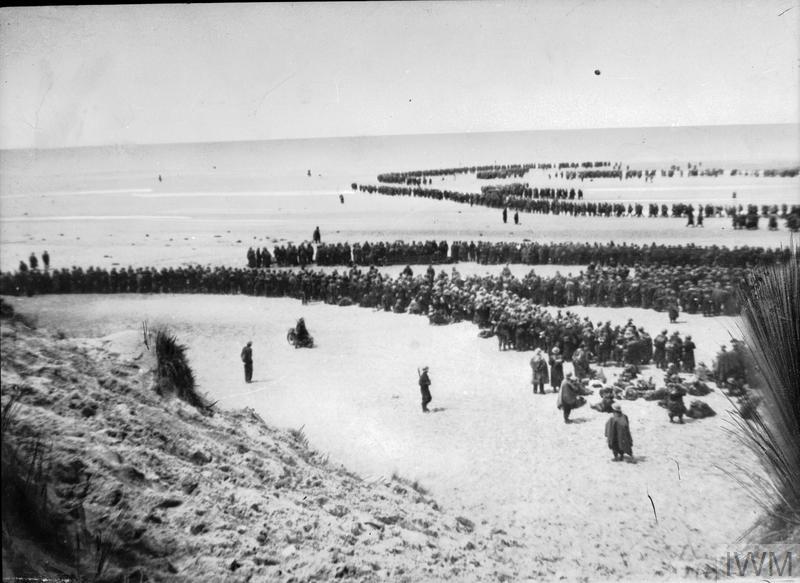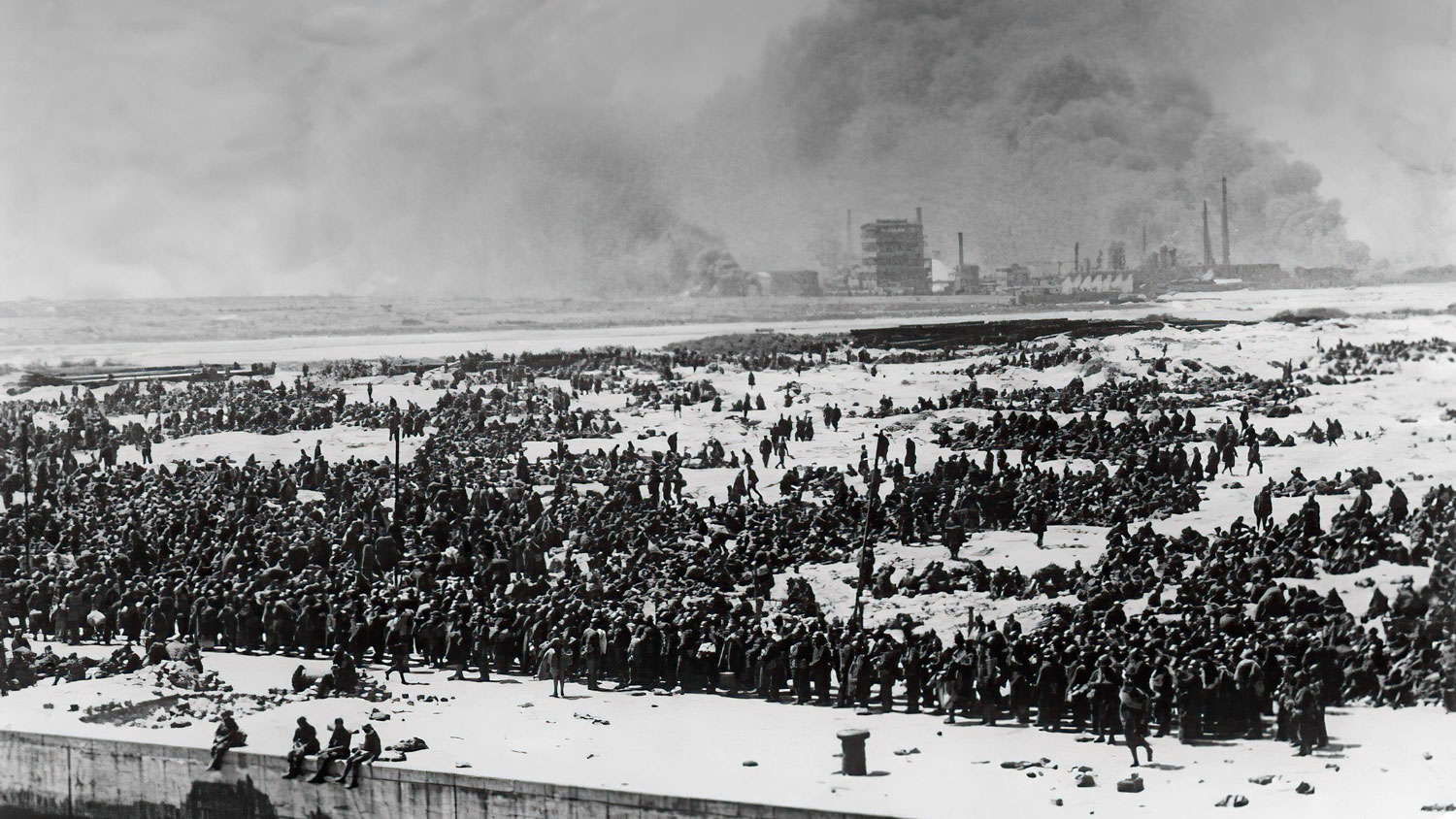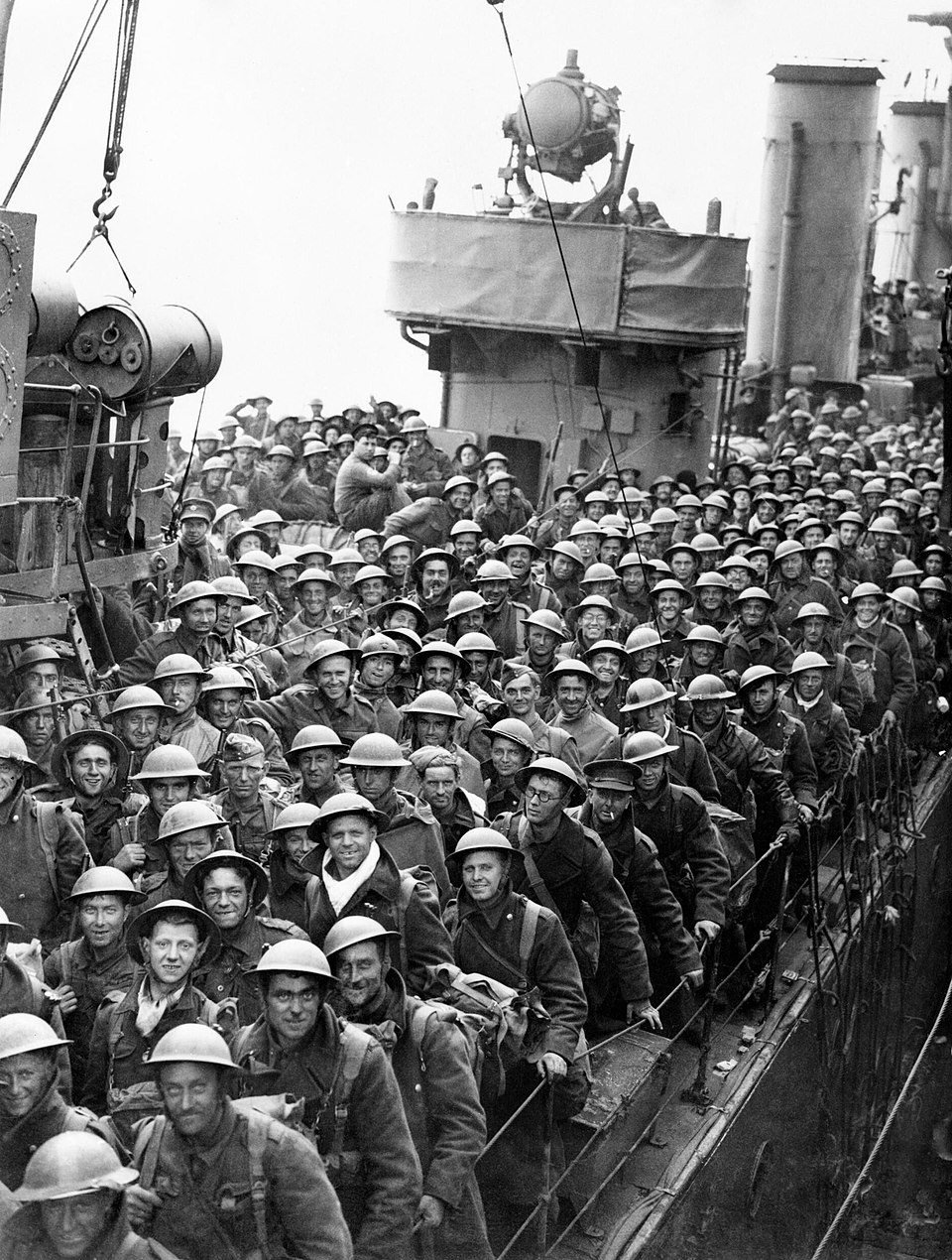The photograph reveals British soldiers exhausted but packed into every inch of space on a rescue boat’s decks as they are extracted from the vicinity of Dunkirk. Taken by British Army photographers E. G. Malindine and L. A. Puttnam, the photograph illustrates one of the most pivotal points in the beginning stages of World War II. When 400,000 men couldn’t get home, home came for them. Operation Dynamo was codename for the mass evacuation of these men from the beaches and harbors of Dunkirk France between May 26 and June 4, 1940. This photograph does not depict success on the battlefields but instead illustrates relief, survival, and the awareness of disaster and salvation.
In May 1940, the opposing Germans launched swift and rapid attacks on Belgium, the Netherlands, and northern France. Within no time, about 400,000 troops from the Allies, comprised of mostly British and French troops, faced encirclement from Axis German forces. This forced an allied retreat to the beaches of Dunkirk as they had nowhere else to go.[1] German panzers attacked from the frontline while air raids from the Luftwaffe bombed the coastline. As they anticipated encirclement, Britain launched Operation Dynamo from the tunnels underneath Dover Castle using every boat they could get, including destroyers and fishing vessels.[2] Over nine days, more than 338,000 soldiers were evacuated across the English Channel.[3] What could have been a near-total military collapse became remembered as the “Miracle of Dunkirk.”[4]

What happened at Dunkirk also resonated strongly across the Atlantic. The United States, remaining officially neutral, followed events in the evacuation closely through extensive news coverage in the press.[5] Americans following the news observed both the vulnerability of European democracy and the extent of Nazi expansion. As reported in “America: A Narrative History,” this event aided in turning American public opinion in favor of the Lend-Lease Bill. [6] This legislation enabled America to lend important war supplies to countries that either directly assisted America or became important to American security on their own.[7] The Dunkirk evacuation helped strengthen the argument that supporting Britain was not just strategic but a moral necessity. Supplying weapons, ships, and resources revitalized American industry and helped pull the nation from the shadow of the Great Depression. In doing so the United States moved closer to becoming the “arsenal of democracy.”[8] The shift in public attitude also laid the groundwork for American involvement in the war long before the Pearl Harbor attacks. American newspapers repeatedly published photographs like this one, which helped humanize the conflict for U.S audiences and gradually shift public sentiment toward supporting Britain’s fight for survival. In this sense, a moment of desperation overseas influenced the future direction of American foreign policy and its growing global role.

The photograph itself adds emotional depth to this larger story. Malindine and Puttnam chose a slightly elevated angle, placing viewers above the mass of soldiers. From this view, the helmets almost blend into one another, turning individual men into a single collective body. The downward perspective reinforces the idea of a rescue operation, as if the viewer is witnessing the moment of deliverance firsthand. The expressions on the soldiers’ faces show a sense of relief, fatigue, and disbelief which captures the reality of Dunkirk more honestly than official reports. What makes the photograph uniquely powerful is how it captures the emotional aftermath of Dunkirk. Hearing the news or seeing battlefield images does not allow the viewer to grasp what survival actually looked like. Yet this photograph shows men whose facial expressions reflect the relief of being able to live another day. Unlike many Dunkirk images that show beaches or distant columns of troops, this photograph placed the viewer almost eye-level with the rescued men, offering a rare, intimate view of their emotional release in the immediate aftermath of survival.
Winston Churchill later remarked that “wars are not won by evacuations,” yet he conceded that “there was a victory inside this deliverance.”[9] His June 4 speech, “We Shall Fight on the Beaches”, captured Britain’s refusal to surrender.[10] Photographs like this one appeared again and again in daily papers, carrying that message with a kind of steady pulse. Readers were not shown a shattered force. They saw hundreds of rescued soldiers who would soon help defend Britain in the Battle of Britain, and the image carried that weight.[11] A visual emblem of national resilience took shape, marking the instant when fear hardened into resolve.
Beyond its immediate military impact, the evacuation also took on a powerful cultural meaning. The “Dunkirk spirit” later settled into a cultural shorthand for unity in crisis. The rescue depended on hundreds of civilian “little ships,” a ragtag mix of fishing boats, ferries, and private craft that blurred the boundary between the front line and the home front.[12] Fleet Street papers built the moment into a national legend, stressing how ordinary people hauled the army back from the edge.[13] The photograph echoes this idea. The crowded deck suggests more than a mass of exhausted soldiers. It hints at a country refusing to fold, even as the pressure closed in.

Dunkirk now sits among the most widely recognized events of World War II. The photograph circulates in textbooks, museums, and films such as Christopher Nolan’s Dunkirk (2017). Its force lasts because of what it exposes: history is shaped not only through clear-cut battlefield triumphs but through narrow escapes, those fragile moments when collapse looms and determination edges out despair. Malindine and Puttnam captured more than an evacuation. They preserved a moment of national endurance that influenced American foreign policy and helped mold the international order that followed.
Works Cited
[1] David Shi, America: A Narrative History, Brief 13th ed., Vol. 2 (New York: W. W. Norton, 2023), section on “The Phony War in Europe.”
[2] “Operation Dynamo: Things You Need to Know,” English Heritage, https://www.english-heritage.org.uk/visit/places/dover-castle/history-and-stories/operation-dynamo-things-you-need-to-know/.
[3] “Dunkirk Evacuation,” Encyclopedia Britannica, https://www.britannica.com/event/Dunkirk-evacuation.
[4] “What Really Happened at Dunkirk,” History Collection, https://historycollection.com/from-disaster-to-triumph-what-really-happened-at-dunkirk/.
[5] Dunkirk Evacuation, Encyclopedia Britannica, https://www.britannica.com/event/Dunkirk-evacuation.
[6] David Shi, America: A Narrative History, section “The Lend-Lease Act.”
[7] “Lend-Lease Act,” Fiveable, https://fiveable.me/key-terms/ap-world/lend-lease-act.
[8] Ibid.
[9] Winston S. Churchill, “We Shall Fight on the Beaches,” June 4, 1940, International Churchill Society, https://winstonchurchill.org/resources/speeches/1940-the-finest-hour/we-shall-fight-on-the-beaches/.
[10] Ibid.
[11] David Shi, America: A Narrative History, section “The Battle of Britain.”
[12] “Operation Dynamo,” English Heritage, https://www.english-heritage.org.uk/visit/places/dover-castle/history-and-stories/operation-dynamo-things-you-need-to-know/.
[13] James Barker, “How Fleet Street Turned Dunkirk from Catastrophe into Cultural Icon,” The Conversation, https://theconversation.com/how-fleet-street-turned-dunkirk-from-catastrophe-into-cultural-icon-42440.
